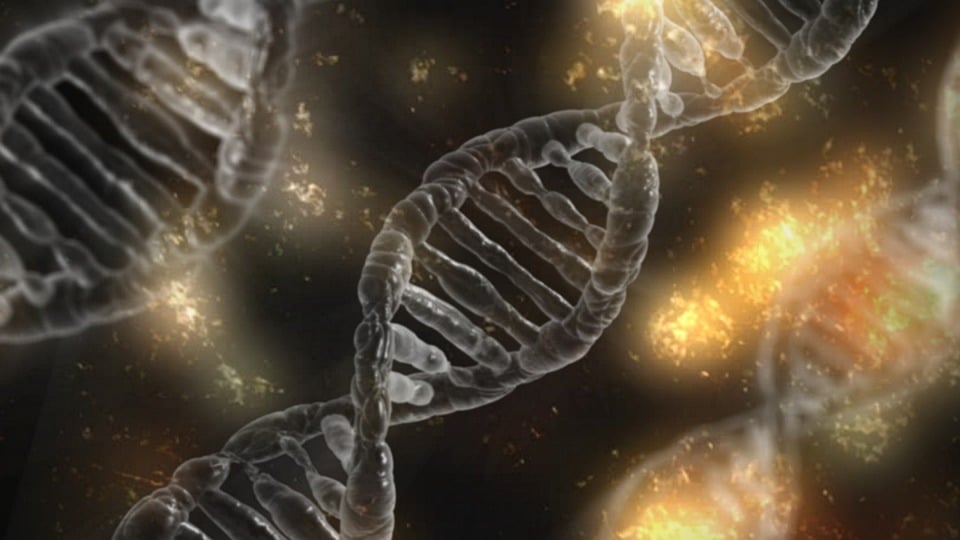
An international team of scientists has revealed that rogue rings of DNA, known as extrachromosomal DNA (ecDNA), can significantly drive the growth of glioblastomas, the most common and aggressive form of adult brain cancer. This discovery, published in Cancer Discovery, could pave the way for innovative approaches to diagnose glioblastoma early, monitor its progression, and enhance treatment efficacy.
The findings suggest that ecDNA rings containing cancer-driving genes often emerge in the earliest stages of glioblastoma development, potentially even before the tumor has fully formed. This early presence may contribute to the cancer’s rapid growth, adaptability, and resistance to treatment. The study was spearheaded by Dr. Benjamin Werner at Queen Mary University of London and Professor Paul Mischel at Stanford University, in collaboration with Professor Charlie Swanton at The Francis Crick Institute.
Understanding the Challenge of Glioblastoma
Glioblastoma remains one of the most challenging cancers to treat, with median survival rates hovering around 14 months and little improvement over recent decades. The urgent need for new diagnostic and treatment methods has driven researchers to explore the role of ecDNA in cancer development. The Cancer Grand Challenges initiative, a collaboration between Cancer Research UK and the National Cancer Institute in the US, has identified ecDNA as a critical area of focus.
In 2022, the initiative funded team eDyNAmiC, a $25 million international consortium of experts in various fields, to investigate ecDNA’s role and potential as a therapeutic target. The current study represents a significant advancement in this ongoing research.
Exploring Tumor Evolution
In their groundbreaking study, team eDyNAmiC integrated genomic and imaging data from glioblastoma patients with advanced computational modeling to trace the evolution of ecDNAs over time. Dr. Benjamin Werner explained, “We studied the tumors much like an archaeologist would. By excavating multiple sites around the tumor, we were able to build computational models describing their evolution. We simulated millions of scenarios to reconstruct how the earliest ecDNAs emerged, spread, and drove tumor aggressiveness, providing a clearer picture of the tumor’s origins and progression.”
The analysis revealed that most ecDNA rings contained EGFR, a potent cancer-driving gene. EGFR ecDNA appeared early in the cancer’s evolution and frequently gained additional changes, such as the EGFRvIII variant, which made the cancer more aggressive and resistant to therapies.
A Window of Opportunity
According to Dr. Magnus Haughey, a postdoctoral researcher in Dr. Werner’s group, “These subtle mechanisms indicate a potential window of opportunity to detect and treat the disease between the first appearance of EGFR ecDNA and the emergence of more aggressive variants.” If scientists can develop a reliable test to detect early EGFR ecDNA, perhaps through a blood test, it could enable intervention before the disease becomes more challenging to treat.
The study confirmed that ecDNA can carry multiple cancer genes simultaneously, each influencing how tumors evolve and respond to treatment. This highlights the potential value of tailoring treatments based on a tumor’s ecDNA profile.
Future Directions in Cancer Research
Despite these promising findings, many mysteries remain. Researchers plan to study how different treatments affect the number and types of ecDNA in glioblastoma. Team eDyNAmiC will continue to explore ecDNA’s role across various cancer types to uncover further opportunities for early diagnosis, precise tracking, and innovative treatment strategies.
Charlie Swanton, Deputy Clinical Director at The Francis Crick Institute, stated, “These findings suggest that ecDNA is not just a passenger in glioblastoma but an early and powerful driver of the disease. By tracing when and how ecDNA arises, we open up the possibility of detecting glioblastoma much earlier and intervening before it becomes so aggressive and resistant to therapy.”
Paul Mischel, MD, emphasized, “These findings reveal an important new insight into the role of ecDNA in tumor development and progression. The possibility that glioblastoma could be detected and treated earlier based on ecDNA is an exciting prospect.”
Dr. David Scott, Director of Cancer Grand Challenges, added, “This study exemplifies the bold, boundary-pushing science Cancer Grand Challenges was created to support. By unraveling the evolutionary history of ecDNA in glioblastoma, team eDyNAmiC is not only deepening our understanding of one of the most devastating cancers but also illuminating new paths for earlier detection and treatment.”
As research continues to unfold, the potential to transform glioblastoma diagnosis and treatment through the study of ecDNA offers hope for a future where this aggressive cancer may be detected and managed more effectively.







